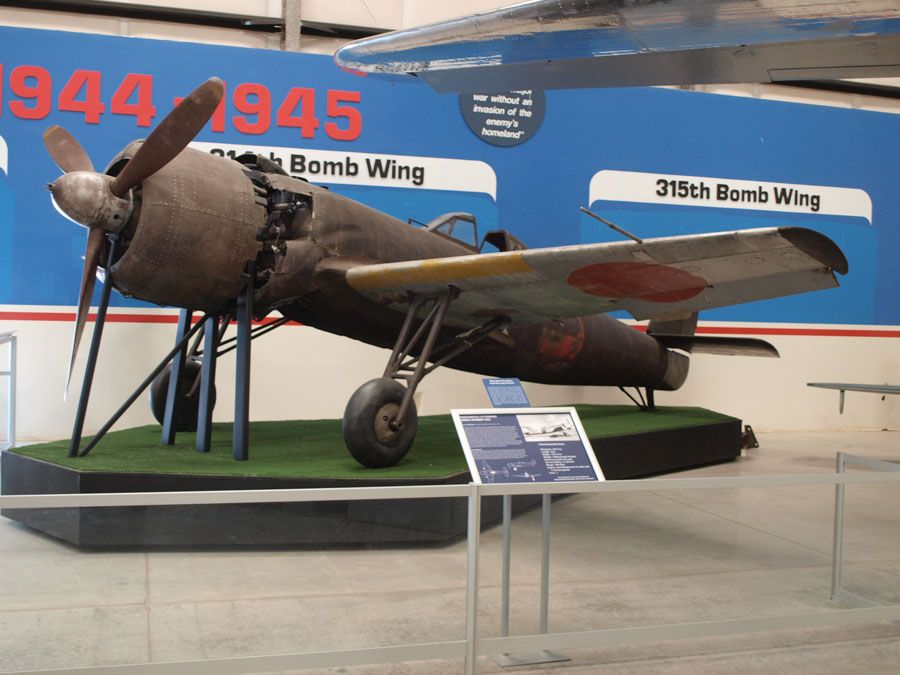Nakajima Ki-115 Tsurugi
In August 1944, the leadership of the Japanese military made the decision to begin organized aerial suicide attacks against Allied naval forces. Most of these attacks would be made using normal combat aircraft but the Japanese leaders realized that there were not nearly enough aircraft to fend off the Allies. The Ki-115 Tsurugi, which translates as sword or saber, was the Army’s answer to that problem. It was designed to be easy for relatively unskilled workers to build and to use a minimum of strategic materials. Much of the structure was made of wood, and the fuselage skin is thin steel. To save weight and eliminate the need for retractable landing gear the entire landing gear structure was dropped from the aircraft after take-off. Several different engines could be fitted depending on what was available. However, the Nakajima Ha-35 engine was the only one actually used. During testing the aircraft proved to be very difficult to fly, especially for the all but untrained pilots who were supposed to take it into combat. Over 100 aircraft were built between May and August 1945 but none were used operationally.
Wingspan | 28 ft 2 in. |
Length | 28 ft |
Height | 10 ft 10 in. |
Weight | 5,688 pounds (loaded) |
Maximum Speed | 342 MPH |
Service Ceiling | 21,325 feet |
Range | 746 miles |
Engine | One Nakajima Ha-35 radial with 1,130 horsepower |
Crew | 1 |
Manufacturer
Nakajima
Markings
Imperial Japanese Army Air Force, 1945
Designation
Ki-115
Serial Number
1002
